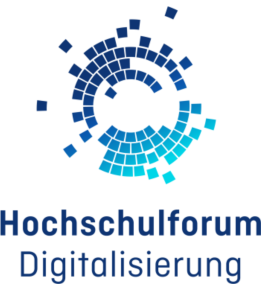What potential does e-learning have for fairness, transparency and the fight against discrimination
What potential does e-learning have for fairness, transparency and the fight against discrimination
29.05.19
Can e-learning make a decisive contribution to combating discrimination and maintain fairness and transparency? And how does this compare to face-to-face teaching, where communication is more situational and spontaneous? Dipl.-Ing. Julia Knopp from RWTH Aachen University is investigating these questions.
This article was automatically translated using DeepL Translator. Please excuse any errors.
![Does e-learning have the potential to combat discrimination? And how does it compare to classroom teaching? Foto: [https://unsplash.com/photos/oux1EInHTM4 Søren Astrup Jørgensen] The same for everyone, because you don't know anybody.](/sites/default/files/images/blog/soren-astrup-jorgensen-229456-unsplash_0.jpg)
With e-learning, especially with electronically supported distance learning, the roles and tasks of the teacher change. As an e-tutor I accompany learners daily without ever seeing them, maybe even hearing them. Communication between teachers and students often takes place in writing via email, chat or Etherpad. Nevertheless, it is my task and responsibility as a teacher to emphatically supervise the individual learning processes of the students and to perceive areas of tension. How can this work? The key lies in a sensitised attitude during written communication. In what style does a learner write to me, what is the message and the concern? Do worries or needs, perhaps criticism or confirmation, hide behind the pure meaning of words and sentences? I make these considerations for myself, relate them to the context and the respective learning status. In e-learning, the subject matter is clearly defined, stored as an artifact on a server and made accessible. Teaching becomes transparent.
![Does e-learning help against discrimination? Foto: [https://unsplash.com/photos/XcWtrmI6mpg Markus Spiske] E-Learning in contrast to classroom teaching has the potential to combat discrimination.](/sites/default/files/images/blog/markus-spiske-1217272-unsplash_0.jpg)
E-Learning: The written word has a lasting effect, it is fixed and almost irrevocable.
The curricular information and the examination information are the basis of the pedagogical working alliance between me as a teacher and the learner. In addition, students have different expectations regarding the supervision and the way in which I as a teacher should communicate and be available. In this construct of expectation, content-related pedagogical work alliance and individual needs and concerns, I have to find the “right tone” when supervising e-learning courses. It is not an easy task, because there is often a lack of small information like facial expression, tone of voice and posture to assess whether my answer is “right”. Nor can I apologize with a smile if a statement was perhaps not perfectly placed. A non-violent language, the consistent reference to the content-related work alliance and a well-considered language style help to avoid misunderstandings. My job is to motivate people as they learn without knowing what their condition is. My task is to discipline without knowing the respective socialisation. It is also difficult to derive cultural backgrounds from the names of the participants. A foreign-language name does not necessarily mean that a person has a migration background. Potential for misunderstanding everywhere – and hardly any chance to make up for them! The written word has a lasting effect, it is fixed and almost irrevocable. The discussion about e-learning and the digitalisation of education offers the opportunity to explore the field of tension “e-communication” interactively. Action aids support e-tutors in e-based conflict resolution in the context of distance learning. If we as e-learning companions are ready to strike the right “tone” reliably and confidently, then e-learning in particular has the potential to make a decisive contribution to combating discrimination and to maintain fairness, as opposed to face-to-face teaching, in which communication can take place spontaneously and situatively!
Translated with www.DeepL.com/Translator

